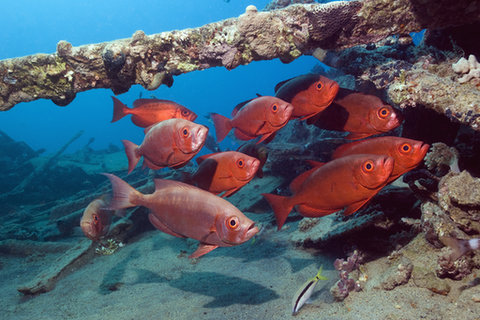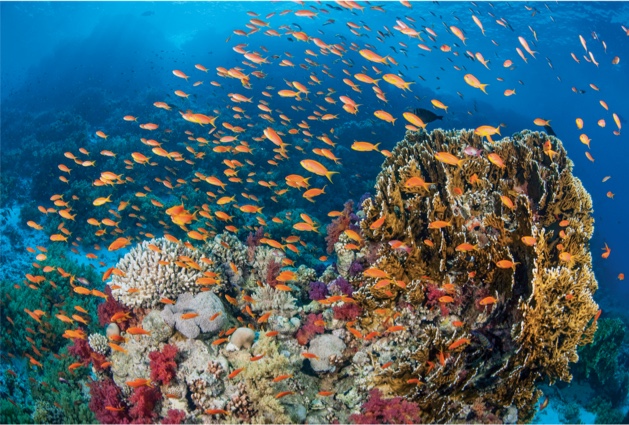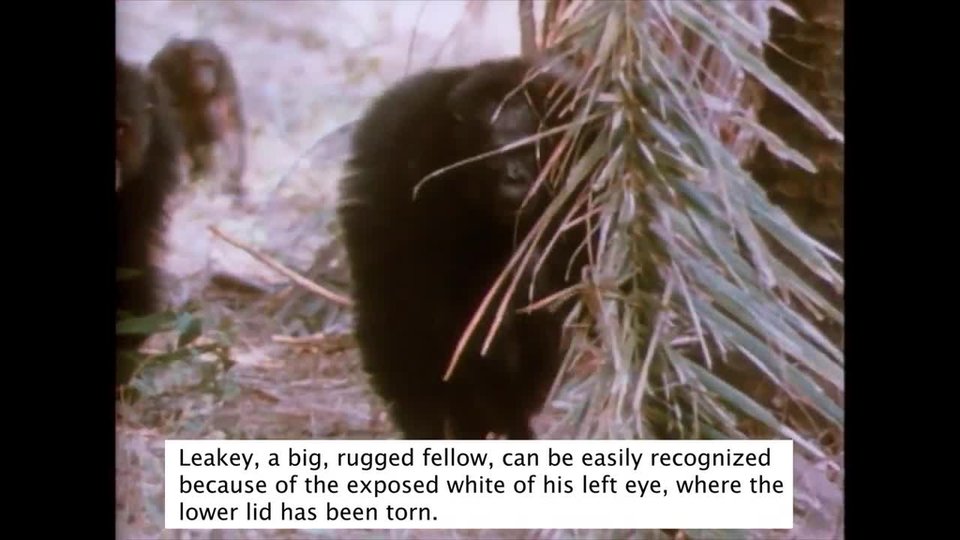It’smiddayoffthecoastofCancún,Mexico.You’reonaboatgettingreadyforareefdive.Youcheckyourgear.Thenyoutipbackwardofftheboatintotheclear water.
Youswimdown.Youseesomethingneartheseabed.There,youcomeface-to-facewith… anotherface.Itispartofastonestatuecoveredinclumpsofalgaeandbitsofcorals.Therearemanystatueshere.What’sgoingon?YoudoveintothemiddleofMUSA.It’sanunderwatermuseumofsculptures.It’salsoanartificialreef. ItwascreatedtoprotectsomeofMexico’snatural reefs.


Bigeyesliketheselivenearcoral reefs.
TheValueofReefs
Oceanscover71percentofEarth’ssurface.Theyhold97percentoftheplanet’swater.Wedependonoceansfortheairwebreathe.Oceanplantsproducehalfoftheworld’soxygen.Oceanwatersabsorbcarbondioxide.Theoceansalsocontrolthe weather.
CoralreefsarethelargestlivingstructuresonEarth.Theyplayabigroleinkeepingouroceanshealthy.Reefsalsoprotectshorelinesfromstormsandhigh tides.
Reefsprovidefood,protection,andspawningareasforfishandothermarinelife.Andmillionsofpeoplecountoncoralreefsfortheirfoodor income.


ThisnaturalreefintheRedSeaisfullofmarine life.
ReefsinTrouble
Unfortunately,increasedhumanactivityputsastrainonouroceansandreefs.Certainfishingmethodsdamagereefs.Carelesstourists,pollution,andclimatechangethreatenthereefs, too.
Thisreefwasdamagedbypeopleblastfishingwith dynamite.
InCancún,Mexico,morethan400,000touristsvisitedthenaturalreefseveryyear.Manywerebeginningdivers.Theirlackofskillcauseddamage.MUSAwascreatedtodrawpeopleawayfromnaturalreefstowardartificialones.It’sworking.ManypeoplenowvisitMUSAinsteadofthenatural reefs.
